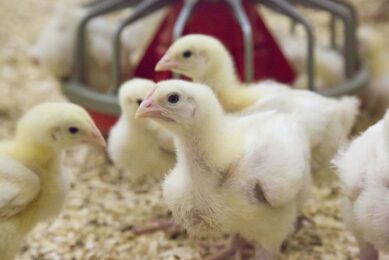Hard to Crack: The secret of a strong eggshell

There’s been a lot of discussion these days about the qualities of the most marketable eggs. We’ve gone beyond fundamental safety and nutrition to a growing retail movement that seeks cage-free produced eggs and value-added product, such as omega-3 eggs.
Yet we actually do not discuss enough the most basic aspect of quality that matters to everyone: eggshell strength. Simply put, cracked eggs do not sell; without eggshell quality, no other egg characteristic matters.
Importance of layer hen nutrition
Similar to prenatal vitamins for a pregnant woman, the quality of an egg can be greatly impacted by the nutrition of the layer hen. By changing a bird’s diet, everything from chick development to shell condition can be affected. For this post, we are going to focus on the effect minerals can have on shell strength, specifically in regard to the form those minerals are given in.
On the farm, up to 90% of total losses can come as a result of poor eggshell quality. Shell strength is important to eggs for withstanding the sometimes turbulent shipping process or to protect developing chicks from external world. A strong shell is the difference between making sure eggs make it safely from the farm to your plate, or your child’s paint brush in the case of Easter painting traditions.
Critical role of trace minerals
Even though eggshells are composed of 94% calcium carbonate and 1.4% magnesium carbonate, many new studies are now revealing the critical role of trace minerals in eggshell formation. A 2012 study from the Institute of Biodiversity, Glasgow, United Kingdom, found that strength is reduced by the inclusion of abnormal forms of minerals in the diet.
Conversely, in bioplexed form, selenium, manganese, zinc, copper, and iron are absorbed more readily. These elements are essential nutrients to shell strength and are crucial to a number of enzymatic processes that lead to optimal shell formation.






